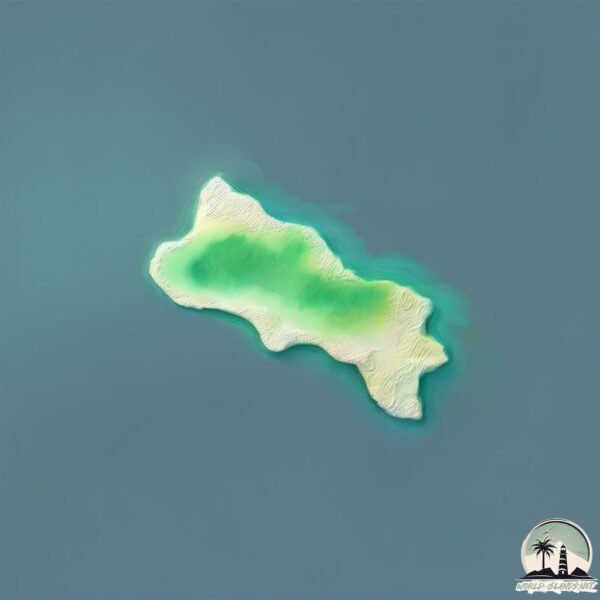Welcome to Marathonísi , a Temperate island in the Ionian Sea, part of the majestic Atlantic Ocean. This guide offers a comprehensive overview of what makes Marathonísi unique – from its geography and climate to its population, infrastructure, and beyond. Dive into the details:
Geography and size of Marathonísi
Size: 0.262 km²Coastline: 2.5 kmOcean: Atlantic OceanSea: Ionian SeaContinent: Europe
Marathonísi is a Tiny Island spanning 0.262 km² with a coastline of 2.5 km.
Archipel: Ionian Islands – A group of islands in the Ionian Sea, west of mainland Greece, known for their rich history, beautiful landscapes, and cultural heritage.
Tectonic Plate: Aegean Sea – Located in the eastern Mediterranean, this microplate is characterized by seismic and volcanic activity due to its interaction with the Eurasian and African Plates.
The geographic heart of the island is pinpointed at these coordinates:
Climate and weather of Marathonísi
Climate Zone: TemperateClimate Details: Hot-Summer Mediterranean ClimateTemperature: Hot Summer
Climate Characteristics: Characterized by hot, dry summers and mild, wet winters, typical of coastal areas with abundant sunshine.
Topography and nature of Marathonísi
Timezone: UTC+02:00Timezone places: Europe/MariehamnMax. Elevation: 12 m Mean Elevation: 9 mVegetation: Evergreen Broadleaf ForestTree Coverage: 87%
The mean elevation is 9 m. The highest elevation on the island reaches approximately 12 meters above sea level. The island is characterized by Plains: Flat, low-lying lands characterized by a maximum elevation of up to 200 meters. On islands, plains are typically coastal lowlands or central flat areas.
Dominating Vegetation: Evergreen Broadleaf Forest
Vegetation: 3 vegetation zones – Moderately Diverse Island
Infrastructure and Travelling to Marathonísi
Does the island have a public airport? no .
Does the island have a major port? no .
The mean population of Marathonísi is 43 per km². Marathonísi is Gently Populated. The island belongs to Greece .
Continuing your journey, Zakinthos is the next notable island, situated merely km away.
Music: Push It Baby! Musician: Philip E Morris.
Marathonisi island of Keri beach, Zakynthos Island September 2023. Zante #mygreekodyssey
Music: Push It Baby! Musician: Philip E Morris.
Music: Push It Baby! Musician: Philip E Morris.
Marathonisi Turtle ISLand Zakynthos 2018
For more Zakynthos Videos Please go subscribe our channel.... If you ...
For more Zakynthos Videos Please go subscribe our channel.... If you have any problem with copyright issues, or question please ...
Visit MARATHONISI ISLAND in Zakynthos
Visit “Turtle Island” of Marathonisi and Zakynthos Marine Park ...
Visit “Turtle Island” of Marathonisi and Zakynthos Marine Park ...
Greece is classified as Developed region: nonG7: Developed economies outside of the Group of Seven, characterized by high income and advanced economic structures. The level of income is High income: OECD.
News – Latest Updates and Headlines from Marathonísi
Stay informed with the most recent news and important headlines from Marathonísi. Here’s a roundup of the latest developments.
Loading...
Please note: The data used here has been primarily extracted from satellite readings. Deviations from exact values may occur, particularly regarding the height of elevations and population density. Land area and coastline measurements refer to average values at mean high tide.

